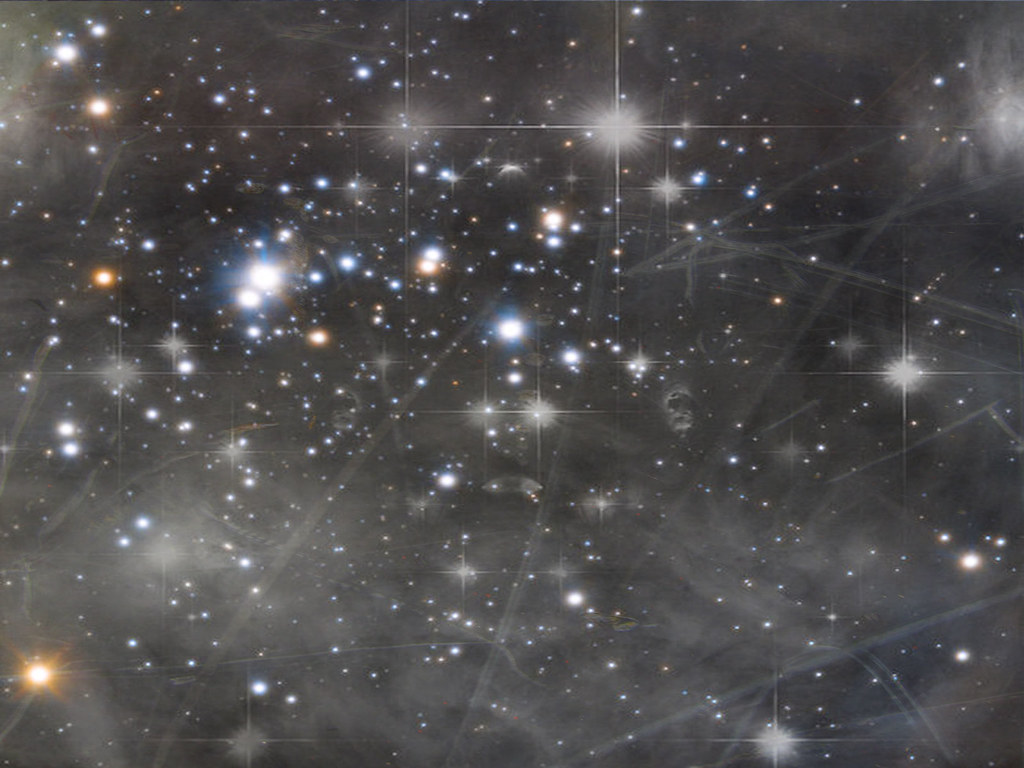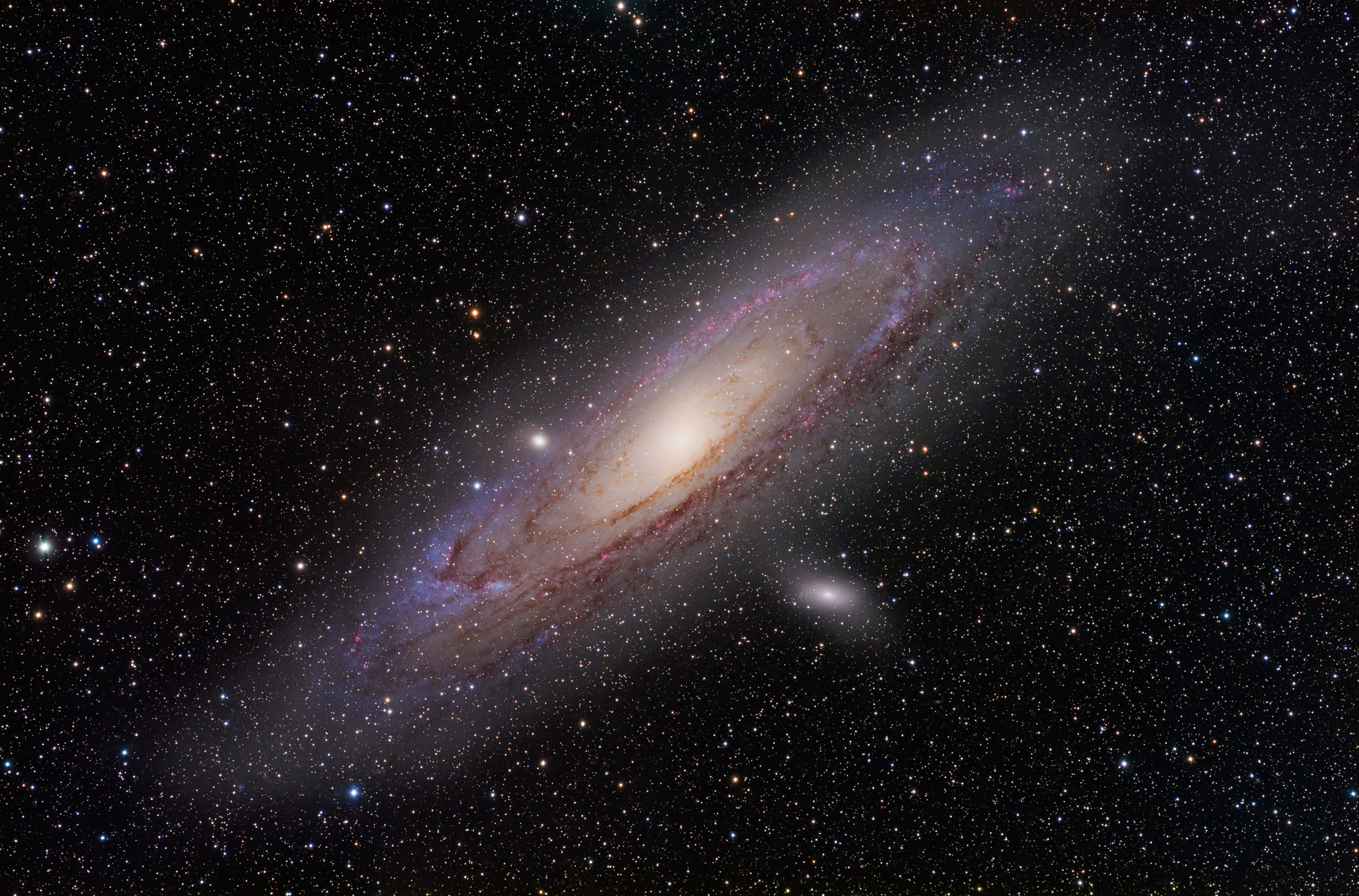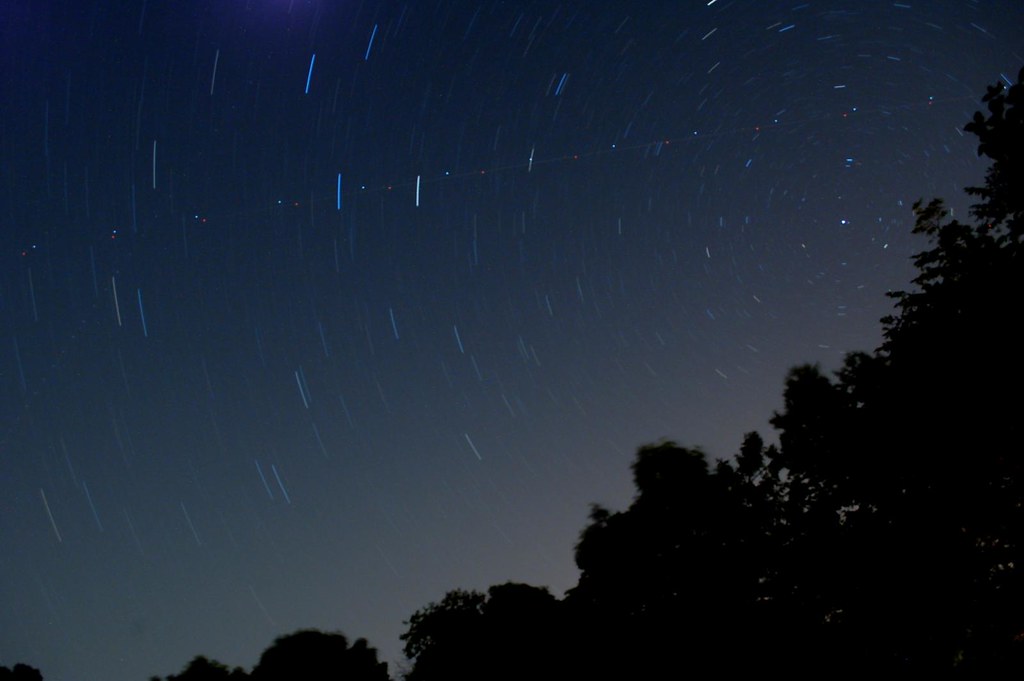
When you look up at the night sky, what do you really see? More than just twinkling lights, those distant specks of brilliance are colossal spheres of plasma, each with a story stretching back billions of years. Stars aren’t just pretty; they are the fundamental building blocks of the cosmos, the engines that forge the elements that make up everything around us, including you!
But how much do we truly know about these magnificent celestial bodies? From their fiery birthplaces in nebulae to their spectacular demise, stars undergo incredible transformations. They dictate the very structure of galaxies, serve as ancient navigators, and even hold the secrets to the universe’s chemical tapestry. It’s a journey through cosmic history that’s more mind-blowing than any sci-fi epic.
Get ready to dive deep as we pull back the curtain on some of the most fascinating aspects of stars. We’re talking about how we’ve observed them throughout history, the surprisingly complex ways we name them, the mind-boggling units we use to measure them, and the dramatic cycles of their lives. Prepare to have your cosmic curiosity ignited!

1. **Ancient Stargazers: A Journey Through Observation History**For civilizations across the globe and throughout history, stars have held immense importance. They weren’t just decorative elements in the night sky; they were woven into religious practices, divination rituals, and the very fabric of mythology. Beyond the spiritual, stars were indispensable tools for celestial navigation and orientation, vital for marking the passage of seasons, and fundamental to defining calendars that structured agricultural life.
Early astronomers, with keen eyes and curious minds, quickly noticed a crucial distinction between what they called “fixed stars”—those whose positions on the celestial sphere remained constant—and “wandering stars,” or planets, which noticeably shifted their positions over days or weeks. Many of these ancient observers held the belief that stars were permanently affixed to an immutable heavenly sphere, a seemingly unchanging cosmic backdrop to our dynamic world.
However, the concept of permanence began to be challenged by various cultures. The earliest known star catalogues were meticulously compiled by the ancient Babylonian astronomers of Mesopotamia in the late 2nd millennium BC. Later, the first star catalogue in Greek astronomy was created by Aristillus in approximately 300 BC, with the help of Timocharis, leading to Hipparchus’s more extensive catalogue of 1,020 stars, and his monumental discovery of the first recorded nova, or “new star.”
Chinese astronomers were notably ahead of their time, acknowledging that new stars could indeed appear. They were the first to observe and document a supernova in 185 AD, now famously known as SN 185. This was followed by the brightest stellar event in recorded history, the SN 1006 supernova, observed and written about by Egyptian and Chinese astronomers, and the SN 1054 supernova, which gave birth to the iconic Crab Nebula.
Medieval Islamic astronomers made incredible strides, assigning Arabic names to many stars still used today and inventing sophisticated astronomical instruments to compute stellar positions. They established the first large observatory research institutes primarily to produce Zij star catalogues, with the Persian astronomer Abd al-Rahman al-Sufi’s “Book of Fixed Stars” (964) being a standout. Later, scholars like Abu Rayhan Biruni and Ibn Bajjah described the Milky Way galaxy as a multitude of nebulous stars, hinting at its true nature long before modern telescopes.
In Europe, Tycho Brahe’s identification of new stars, later termed novae, shattered the belief in immutable heavens. Giordano Bruno boldly suggested in 1584 that stars were akin to our Sun and might host other planets, a concept echoed by Isaac Newton, who posited stars were equally distributed. The 17th and 18th centuries saw breakthroughs by Geminiano Montanari, who recorded variations in Algol’s luminosity, and Edmond Halley, who published the first measurements of stellar proper motion, demonstrating that stars weren’t as “fixed” as once thought. William Herschel spearheaded the mapping of stellar distribution and discovered binary star systems, paving the way for a deeper understanding of our galaxy.
As we moved into the 19th and 20th centuries, scientific study of stars exploded. Stellar spectroscopy, pioneered by Joseph von Fraunhofer and Angelo Secchi, allowed astronomers to classify stars by spectral types, a system later refined by Annie J. Cannon. Friedrich Bessel achieved the first direct measurement of a star’s distance using parallax, revealing the vast cosmic scale. The observation of binary stars by astronomers like Friedrich Georg Wilhelm von Struve and S. W. Burnham, and the theoretical work on stellar structure leading to the Hertzsprung-Russell diagram, profoundly advanced our understanding. Cecilia Payne-Gaposchkin’s 1925 PhD thesis, proposing stars were primarily made of hydrogen and helium, truly revolutionized the field, ushering in the era of modern astrophysics.

2. **Cosmic Cartography: How Stars are Designated and Catalogued**Have you ever wondered why some stars have such unique names, or how astronomers keep track of the billions of celestial objects? It all started with ancient sky watchers, particularly during the Babylonian period, who began to imagine that prominent arrangements of stars formed patterns. These patterns, which we now know as constellations, were then associated with specific aspects of nature or their rich mythologies, giving the night sky a profound cultural significance.
Among these formations, twelve notable arrangements lay along the band of the ecliptic, becoming the foundational basis of astrology. Beyond these larger groupings, many of the more prominent individual stars were given their own proper names, with a strong prevalence of Arabic or Latin designations. Just like certain constellations and even the Sun itself, these individual stars were often steeped in their own unique myths and lore.
Interestingly, the Ancient Greeks initially recognized certain “stars” that visibly moved across the sky as “planets,” from their word πλανήτης (planētēs), meaning “wanderer.” These wandering stars were thought to represent various important deities, giving us the names for planets like Mercury, Venus, Mars, Jupiter, and Saturn. It’s a reminder of how our understanding of the cosmos has evolved, distinguishing between distant suns and orbiting worlds.
By approximately 1600, a more systematic approach to naming stars began to emerge. The names of constellations started to be used to designate the stars within their corresponding regions of the sky. The German astronomer Johann Bayer took this a step further, creating a series of star maps and applying Greek letters as designations to the stars in each constellation, giving us designations like Alpha Centauri. Later, a numbering system based on a star’s right ascension was added to John Flamsteed’s star catalogue in his “Historia coelestis Britannica,” which is why we now have Flamsteed designations.
Today, the International Astronomical Union (IAU) stands as the internationally recognized authority for officially naming celestial bodies. This prestigious organization maintains the Working Group on Star Names (WGSN), a dedicated entity that diligently catalogs and standardizes proper names for stars across the universe. Their work ensures consistency and clarity in the vast and ever-expanding astronomical lexicon, helping scientists worldwide communicate effectively about their discoveries.
However, it’s worth noting a fascinating, albeit controversial, side activity: a number of private companies have emerged that sell names of stars. It’s crucial to understand that these designations are not recognized by the IAU, by professional astronomers, or by the broader amateur astronomy community. The British Library has even publicly labeled this as an “unregulated commercial enterprise,” and the New York City Department of Consumer and Worker Protection once issued a violation against one such company for engaging in a “deceptive trade practice.” So, while it might seem like a romantic gesture, officially naming a star for a loved one is a gesture more symbolic than scientific!

3. **Measuring the Cosmos: Unpacking Stellar Units of Measurement**When we talk about the colossal scale of stars and their mind-boggling properties, using everyday units like kilograms or meters can quickly become cumbersome. Imagine trying to describe the diameter of a giant star in centimeters – you’d be writing numbers for days! That’s why, while stellar parameters can certainly be expressed in standard SI or Gaussian units, it’s often far more convenient and practical for astronomers to express mass, luminosity, and radii in specialized solar units, which are based on the familiar characteristics of our own Sun.
In a move to standardize these crucial measurements, the IAU (International Astronomical Union) in 2015 defined a set of nominal solar values. These aren’t just arbitrary numbers; they’re defined as SI constants, meaning they come without uncertainties, providing a rock-solid baseline for quoting stellar parameters. For instance, the nominal solar luminosity (L☉) is precisely set at 3.828 × 10^26 Watts, and the nominal solar radius (R☉) is a neat 6.957 × 10^8 meters. These numbers give us a consistent yardstick for comparing stars across the galaxy.
Now, here’s where it gets a little tricky: the solar mass (M☉) wasn’t explicitly defined by the IAU in the same way. Why? Because the Newtonian constant of gravitation (G) has a relatively large uncertainty of about 10^-4, which would affect the precision of defining M☉ directly. But don’t worry, astronomers found a clever workaround! Since the product of the Newtonian constant of gravitation and solar mass together (G M☉) has been determined to a much greater precision, the IAU defined the nominal solar mass parameter as 1.327 1244 × 10^20 m^3/s^2.
This nominal solar mass parameter is incredibly useful. When combined with the most recent (2014) CODATA estimate of the Newtonian constant of gravitation G, it allows us to derive the solar mass to be approximately 1.9885 × 10^30 kilograms. It’s a testament to scientific ingenuity to work around measurement challenges! While the exact observational values for luminosity, radius, mass parameter, and mass might vary slightly in the future due to ongoing research and refined techniques, the 2015 IAU nominal constants will remain the same SI values. They serve as reliable, consistent measures for comparing and discussing stellar parameters, regardless of minor observational tweaks.
And let’s not forget about truly enormous lengths! When we’re talking about the radius of a giant star or the semi-major axis of a binary star system, even solar radii can be too small a unit. For these vast distances, astronomers often turn to the astronomical unit (AU), which is approximately equal to the mean distance between the Earth and the Sun – a staggering 150 million kilometers, or about 93 million miles. To bring even more precision to this crucial unit, the IAU in 2012 defined the astronomical constant to be an exact length in meters: a mind-boggling 149,597,870,700 meters. These standardized units are what allow us to map and understand the immense tapestry of our universe.

4. **The Cosmic Genesis: Understanding Star Formation**Have you ever pondered where stars actually come from? It’s not magic, but a truly spectacular process of cosmic alchemy! Stars don’t just appear out of nowhere; they condense from regions of space where matter density is significantly higher than average, though these areas are still less dense than within a vacuum chamber. These stellar nurseries, known as molecular clouds, are primarily composed of hydrogen, along with about 23 to 28 percent helium, and just a few precious percent of heavier elements. A famous example of such a vibrant star-forming region is the breathtaking Orion Nebula.
It might surprise you to learn that most stars aren’t born in solitude. Instead, they typically form in groups ranging from dozens to hundreds of thousands of stars, creating dazzling stellar clusters. Within these bustling nurseries, massive stars play a dramatic role; their powerful radiation can brightly illuminate the surrounding clouds, ionizing the hydrogen and giving rise to what are known as H II regions. These energetic feedback effects, stemming directly from the process of star formation itself, can eventually disrupt the molecular cloud and, paradoxically, prevent further star formation, shaping the future of the stellar population.
The genesis of a star kicks off with a profound event: gravitational instability within a molecular cloud. This instability can be triggered by a variety of cosmic forces, such as the compression of clouds by intense radiation from existing massive stars, expanding bubbles in the interstellar medium, the dramatic collision of different molecular clouds, or even the grand collision of entire galaxies, as seen in a starburst galaxy. When a particular region within the cloud accumulates enough matter to satisfy the criteria for Jeans instability, it becomes self-gravitating and begins its inevitable collapse under its own immense gravitational force.
As this dense globule continues its gravitational descent, it forms distinct, dark patches known as “Bok globules” – the embryonic cocoons of future stars. With the collapse, the density within the globule dramatically increases, and the stored gravitational energy is wonderfully converted into heat, causing the temperature to steadily rise. Eventually, when this protostellar cloud approximately reaches a stable condition of hydrostatic equilibrium, a protostar is born right at its core, marking the true beginning of a star’s journey.
These fascinating pre-main-sequence stars are often found cradled within a swirling protoplanetary disk, the very birthplace of planets, and are primarily powered by the conversion of gravitational energy as they continue to contract. This period of gravitational contraction can last for about 10 million years for a star like our Sun, or extend much longer, up to 100 million years, for a smaller red dwarf. Early stars of less than two solar masses are affectionately called T Tauri stars, while their more massive counterparts are known as Herbig Ae/Be stars. These energetic newborns often emit powerful jets of gas along their axis of rotation, which not only help to reduce the angular momentum of the collapsing star but also create small patches of nebulosity known as Herbig–Haro objects. These jets, combined with the radiation from nearby massive stars, play a crucial role in clearing away the remaining surrounding cloud from which the star was formed, allowing its brilliance to shine through.

5. **The Main Act: A Star’s Life on the Main Sequence**Imagine a star settling down for its longest, most stable phase of existence—that’s life on the main sequence! For a whopping 90% of their total lifetimes, stars are hard at work fusing hydrogen into helium in their incredibly hot and dense cores. This remarkable process, a marvel of thermonuclear fusion, releases the immense energy that makes them shine so brightly. During this extended period, these stars are commonly referred to as main-sequence stars, or more simply, dwarf stars.
From the moment a star reaches the zero-age main sequence, its internal chemistry begins a subtle yet profound transformation. The proportion of helium in its core will steadily increase as hydrogen is consumed. In response, the rate of nuclear fusion at the core slowly intensifies, leading to a gradual increase in the star’s temperature and overall luminosity. Our own Sun, for example, is estimated to have become about 40% brighter since it embarked on its main sequence journey a staggering 4.6 billion years ago—a truly cosmic glow-up!
Every star, without exception, continuously generates a “stellar wind” – a persistent outflow of charged particles and gas into the vastness of space. For most stars, including our Sun, the mass lost through this gentle stellar breeze is relatively negligible. The Sun, for instance, sheds approximately 10^-14 solar masses each year, which amounts to roughly 0.01% of its total mass over its entire lifespan. However, for the most massive stars, this mass loss becomes a far more dramatic affair, with them expelling anywhere from 10^-7 to 10^-5 solar masses annually, significantly impacting their evolution. Stars that begin with more than 50 solar masses can astonishingly lose over half of their total mass while still in their main sequence phase, literally blowing parts of themselves away.
The duration a star spends on the main sequence is primarily dictated by two critical factors: the sheer amount of nuclear fuel it possesses and the rate at which it consumes that fuel. Massive stars, despite their enormous fuel reserves, burn through their hydrogen incredibly rapidly, leading to relatively short and spectacularly bright lives. In stark contrast, low-mass stars are the cosmic marathon runners; they consume their fuel at an incredibly leisurely pace. Stars less massive than 0.25 solar masses, known as red dwarfs, are particularly efficient, able to fuse nearly all of their mass, while stars of about one solar mass (like our Sun) can only fuse about 10% of their mass.
The combination of their incredibly slow fuel-consumption rate and a relatively generous usable fuel supply allows these low-mass stars to endure for truly astronomical durations—some lasting about one trillion years, with the most extreme red dwarfs, at 0.08 solar masses, potentially shining for an astonishing 12 trillion years! As they slowly accumulate helium, these red dwarfs actually become hotter and more luminous. When they eventually exhaust their hydrogen fuel, they contract into a white dwarf and gradually decline in temperature. Given that the lifespan of such stars vastly exceeds the current age of the universe (a mere 13.8 billion years), astronomers don’t expect any stars under about 0.85 solar masses to have yet moved off the main sequence, meaning they’re still happily fusing hydrogen!
Read more about: From Stardom to Screens: How 12 Viral Moments Reshape Public Perception Forever

6. **Beyond the Main Sequence: The Red Giant Phase**So, what happens when a star, having enjoyed its long, stable life on the main sequence, finally starts to run out of hydrogen fuel in its core? This is where the drama truly begins! Stars with at least 0.4 solar masses embark on a breathtaking transformation: they begin to fuse hydrogen not in their depleted core, but in a shell surrounding that now inert helium core. This shift in energy production triggers a profound change, causing the star’s outer layers to dramatically expand and cool greatly, ushering it into a magnificent, albeit temporary, new phase: the red giant.
As these celestial behemoths expand, they undergo a fascinating process of cosmic recycling. They often fuse heavier elements not only in their core but also in shells surrounding it. Crucially, as they inflate to gargantuan sizes, they eject a significant portion of their mass—mass that is now enriched with these newly forged heavier elements—back into the interstellar environment. This material doesn’t just vanish; it becomes the raw material, the cosmic ‘star stuff,’ to be recycled and incorporated into the formation of new stars, planets, and perhaps even future life, continuing the grand cycle of the universe.
To put this into perspective, let’s look at our own familiar Sun. In about 5 billion years, when it eventually exhausts its core hydrogen and enters the helium burning phase, our Sun will undergo this exact red giant transformation. It will expand to a maximum radius of roughly one astronomical unit (that’s about 150 million kilometers, or the average distance between the Earth and the Sun!), becoming an astonishing 250 times its present size. During this spectacular expansion, it will also lose a significant 30% of its current mass, forever altering the solar system as we know it.
As the hydrogen-burning shell tirelessly produces more and more helium, the core continues to grow in both mass and temperature. For a red giant with a mass of up to 2.25 solar masses, the helium core takes on a unique state known as degenerate matter before helium fusion can even begin. Finally, when the temperature inside that core escalates sufficiently, core helium fusion ignites, but not gently—it starts explosively in what astronomers call a “helium flash.” This intense burst of energy causes the star to rapidly shrink in radius, its surface temperature soars, and it shifts its position on the Hertzsprung-Russell diagram to the horizontal branch.
But for more massive stars, the story unfolds a little differently. In these stellar giants, helium core fusion begins *before* the core becomes degenerate, skipping the dramatic helium flash. Instead, these stars spend an extended period in what’s known as the “red clump,” where they slowly and steadily burn helium. After this phase, their outer convective envelope eventually collapses, and they too make their way to the horizontal branch, continuing their journey through stellar evolution. It’s a vivid reminder that even seemingly similar cosmic events can play out with fascinating variations depending on a star’s initial mass, making each star’s life a truly unique saga.
Read more about: Flight Terror: United Jet’s Rapid Descent Over Africa Injures 16, Triggered by Dual System Failures

7. **The Grand Finale: Massive Stars and Their Fiery Deaths**Alright, buckle up, because if you thought the red giant phase was dramatic, you haven’t seen anything yet! For stars with more than nine solar masses, the story gets even more intense during their helium-burning phase. They don’t just become red giants; they expand into colossal blue supergiants and then red supergiants. But get this: some truly massive stars, those over 40 solar masses (think Alnilam, that central blue supergiant in Orion’s Belt!), actually skip the red supergiant stage entirely. Why? Because their immense mass loss is so high, they just can’t get there.
Instead, these stellar heavyweights might evolve into what we call Wolf-Rayet stars. These cosmic divas are characterized by spectra that are totally dominated by emission lines of elements heavier than hydrogen. It’s like they’re proudly showing off all the heavy elements they’ve cooked up, which have reached the surface due to incredible convection and intense mass loss, or sometimes because their outer layers have been completely stripped away. Talk about a dramatic wardrobe change!
Once the helium fuel in their core runs out, the core contracts, and the temperature and pressure skyrocket even further, triggering the fusion of even heavier elements. We’re talking about carbon, then neon, then oxygen, and finally silicon, all burning in successive stages! It’s like an onion, with layers of different elements fusing, the outermost shell still burning hydrogen, the next helium, and so on. This incredible process continues until the star starts producing iron.
And here’s the kicker: iron nuclei are the most tightly bound of all, meaning any fusion beyond iron actually *absorbs* energy instead of releasing it. This is the ultimate cosmic dead end! What happens then? Well, for some massive, super-unstable stars, especially the luminous blue variables, they might shed their mass violently in events called supernova impostors, becoming incredibly brighter in the process. Take Eta Carinae, for instance, which underwent a famous supernova impostor event, the Great Eruption, back in the 19th century. These stars really know how to make a grand exit!

8. **Cosmic Leftovers: White Dwarfs, Neutron Stars, and Black Holes**So, what happens after all that stellar pyrotechnics? When a star’s core shrinks, the radiation intensity from its surface becomes so powerful that it creates immense radiation pressure on the outer gas layers. This pressure actually pushes those layers away, forming what we beautifully call a planetary nebula. But the core that’s left behind has its own dramatic fate, and it all depends on its mass.
If the remaining core is less than about 1.4 solar masses, it shrinks down to a relatively tiny object, roughly the size of Earth, known as a white dwarf. These aren’t just small; they’re incredibly dense, and the matter inside them is no longer plasma but rather electron-degenerate. They simply lack the mass for any further gravitational compression, meaning fusion has completely stopped. Over an incredibly long period, these white dwarfs will slowly fade away, eventually becoming what astronomers theoretically call black dwarfs—the coldest, darkest remnants of once-bright stars.
Now, for those truly massive stars, the story takes an even more extreme turn. Their fusion continues until the iron core grows to more than 1.4 solar masses, at which point it can no longer support its own weight. This triggers a sudden, catastrophic collapse! Electrons are forced into protons, creating neutrons, neutrinos, and gamma rays in a spectacular burst of electron capture and inverse beta decay. The shockwave from this rapid collapse causes the rest of the star to explode in a supernova – a cosmic blast so bright it can briefly outshine its entire home galaxy!
After a supernova, the explosion blasts away the star’s outer layers, leaving behind incredible remnants like the famous Crab Nebula. What’s left of the core gets compressed into an unbelievably dense object called a neutron star, which can manifest as a pulsar (sending out beams of radiation) or an X-ray burster. But for the absolute largest stars, the collapse is so profound that the remnant is a black hole, with a mass greater than four solar masses. In a neutron star, matter exists in a mind-boggling state known as neutron-degenerate matter, with even more exotic QCD matter possibly at its core. Talk about an epic transformation!

9. **The Universe’s Recycling Program: From Stellar Death to New Life**Ever heard the saying, “We are all star stuff?” It’s not just poetic, it’s scientific truth, and it all comes down to the universe’s incredible recycling program! When a star, especially one on the asymptotic giant branch (AGB), has finished fusing helium in its core, it continues to fuse helium in a shell around a hot carbon core. During this AGB phase, stars experience thermal pulses—instabilities in their core that cause their luminosity to vary and lead to significant mass ejection.
As much as 50 to 70% of a star’s mass can be shed during these dramatic periods, forming a beautiful planetary nebula. But here’s the cool part: because energy transport in an AGB star is primarily through convection, this ejected material is wonderfully enriched with the fusion products dredged up from the core. So, these planetary nebulae become packed with elements like carbon and oxygen, which weren’t there in the beginning.
Then, of course, there are those spectacular supernova explosions we just talked about. These cosmic detonations aren’t just destructive; they’re incredibly creative! They blast away the star’s outer layers, which are now brimming with heavy elements—elements forged in the heart of the dying star. This chemically enriched material doesn’t just disappear; it’s returned to the vast interstellar medium, essentially becoming the raw ingredients for the next generation of cosmic wonders.
And here’s where it gets really exciting: these heavy elements are absolutely crucial! They’re the building blocks for rocky planets, and they’re recycled into new stars. So, the carbon in your body, the oxygen you breathe, the iron in your blood—all of it was once forged in the fiery heart of a star that lived and died billions of years ago. Future generations of stars, planets, and even life itself are literally made of the ‘star stuff’ from past stars, continuing the magnificent, never-ending cycle of the universe. Pretty mind-blowing, right?

10. **Celestial Synchronicity: The Intriguing Lives of Binary Stars**While we often think of stars as solitary beacons in the night, the truth is, around half of Sun-like stars—and an even higher proportion of massive stars—are actually members of multiple star systems! These aren’t just stars chilling in the same neighborhood; they’re gravitationally bound dancers, orbiting each other in intricate cosmic ballets. And when two stars are close enough, their gravitational interaction can dramatically shake up their evolution, making their life stories very different from single stars of the same mass.
One of the most fascinating phenomena happens when a star expands into a red giant. If it’s in a binary system, it might actually overflow its Roche lobe—the region where its material is gravitationally bound to it. This means some of its material can spill over to its companion star! This mass transfer leads to a whole host of captivating phenomena, including contact binaries (where stars literally touch), common-envelope binaries, cataclysmic variables, and even the mysterious blue stragglers.
This gravitational give-and-take can even lead to a special kind of supernova: Type Ia supernovae, which are incredibly important for measuring cosmic distances. Mass transfer also gives rise to intriguing puzzles like the Algol paradox, where the more evolved star in a binary system turns out to be the *least* massive. It’s a head-scratcher that highlights just how complex these systems can be!
The evolution of binary and higher-order star systems is a hot topic in astronomy, precisely because so many stars are found in them. These multi-star dynamics can greatly influence phenomena like novae and supernovae, impact how certain types of stars form, and even affect the way elements forged in stars are distributed throughout space. It’s like a cosmic domino effect, where one star’s fate is intricately linked to its dance partner.
In fact, some astronomers believe that mass transfer through gravitational stripping in binary systems is the solution to a big mystery: why single massive stars might not be able to expel their outer layers fast enough to form the types and numbers of evolved stars we observe, or to produce the supernova progenitors we see. It seems these celestial partners are not just for show; they’re essential players in the grand evolutionary narrative of the cosmos!

11. **Mapping the Cosmos: The Distribution of Stars Across the Universe**When you gaze into the night sky, you might get the impression that stars are just randomly sprinkled across the universe. But in reality, nothing could be further from the truth! Stars aren’t spread uniformly; they’re normally grouped into magnificent structures called galaxies, along with vast amounts of interstellar gas and dust. Our own Milky Way, for example, is a typical large galaxy, containing hundreds of billions of stars – that’s a lot of twinkling!
And our galaxy is just one among trillions. Astronomers estimate there are more than two trillion galaxies out there, though most are less than 10% the mass of the Milky Way. When you add all those up, the observable universe likely contains an astonishing 10^22 to 10^24 stars. To put that into perspective, that’s more stars than all the grains of sand on planet Earth! It’s a truly humbling thought, isn’t it?
While most stars reside within galaxies, there’s a fascinating twist: between 10% and 50% of the starlight in large galaxy clusters can actually come from stars that are outside of *any* galaxy! These ‘intergalactic’ stars are cosmic wanderers, existing in the vast spaces between galactic homes. It just goes to show how dynamic and complex the universe truly is.
Beyond individual stars, we also find multi-star systems, which consist of two or more gravitationally bound stars orbiting each other. The simplest and most common of these is a binary star, but systems with three or more stars exist too. For stability, these often arrange themselves into hierarchical sets of binary stars, creating intricate celestial mechanics. Then there are even larger groupings called star clusters, which range from loose stellar associations with just a few stars, to open clusters with dozens to thousands, all the way up to enormous globular clusters containing hundreds of thousands of stars. All these incredible systems orbit their host galaxy.
What’s super neat about stars in an open or globular cluster is that they all formed from the same giant molecular cloud. This means they generally have similar ages and chemical compositions, making them fantastic natural laboratories for studying stellar evolution. It’s also interesting to note that while many stars are observed in multiple systems, the proportion of single star systems increases as star mass decreases. For instance, about 80% of very massive O and B class stars are thought to be part of multiple systems, but only about 25% of red dwarfs have stellar companions. Given that red dwarfs make up about 85% of all stars, it’s probable that more than two-thirds of the stars in the Milky Way are actually single red dwarfs. A recent study of the Perseus molecular cloud even found that most newly formed stars are already in binary systems. The universe is truly a cosmic dance floor!

12. **What Makes a Star Tick: Unpacking Stellar Characteristics**Ever wondered how astronomers, from billions of miles away, can tell us so much about a distant star? It’s not magic, but a brilliant blend of observation and physics! By carefully observing a star’s apparent brightness, analyzing its spectrum (the light it emits broken down by wavelength), and tracking tiny changes in its position in the sky over time, scientists can determine a treasure trove of stellar properties. We’re talking about things like its mass, age, chemical composition (or metallicity), variability, distance from Earth, and even its motion through space.
Let’s dive a bit deeper into some of these mind-blowing characteristics. A star’s diameter, for instance, can range from tiny neutron stars just a few miles across to red supergiants that would swallow our entire solar system! Its kinematics—how it moves—tells us about its journey through the galaxy, while its rotation rate can give clues about its formation. And don’t forget the magnetic field, a powerful force that influences everything from stellar winds to sunspots, just like on our own Sun.
But one of the most intriguing characteristics is a star’s chemical composition, what astronomers affectionately call its ‘metallicity.’ Now, in astronomy-speak, “metals” are all elements heavier than helium. And the concentration of these heavier elements in a star plays a really significant role! It can influence how long the star takes to burn its nuclear fuel, effectively dictating its lifespan. It also controls the formation of its magnetic fields, which in turn affects the strength of its stellar wind—that constant outflow of particles into space.
It’s a bit like a cosmic family tree, too. Older stars, often called Population II stars, generally have substantially less metallicity compared to younger, Population I stars. This isn’t because they’re less ‘shiny’; it’s due to the composition of the molecular clouds from which they originally formed. Over cosmic timescales, these star-forming clouds become increasingly enriched with heavier elements, thanks to older stars dying and shedding portions of their atmospheres. So, a star’s metallicity is essentially a historical record, telling us about its birthplace and its place in the universe’s grand evolutionary narrative. How cool is that?

13. **Shining Bright: Stellar Luminosity, Magnitude, and Classification**When we look up at the stars, they all appear to have different brightnesses, right? But what does that really mean? In astronomy, we distinguish between a star’s intrinsic brightness, known as its luminosity, and how bright it *appears* to us from Earth, which is its apparent magnitude. Luminosity is the total amount of energy a star radiates into space every second, a true measure of its power. Apparent magnitude, on the other hand, is affected by both the star’s actual luminosity and its distance from us, which is why a very luminous distant star might appear dimmer than a less luminous, closer one.
To really make sense of the dizzying array of stars out there, astronomers developed sophisticated classification schemes. Stellar spectroscopy, pioneered by Joseph von Fraunhofer and Angelo Secchi, allowed us to break down a star’s light into its component colors, revealing dark absorption lines caused by elements in its atmosphere. Based on these unique spectral fingerprints, Secchi began classifying stars into spectral types back in 1865, a system that was later magnificently refined by Annie J. Cannon in the early 1900s. This classification helps us understand a star’s temperature and composition at a glance.
Another incredibly powerful tool for understanding stars is the Hertzsprung-Russell (HR) diagram, which was developed in 1913. This diagram plots a star’s luminosity against its surface temperature (or spectral type), revealing distinct patterns and stages of stellar evolution. It’s like a cosmic family portrait, showing where stars are in their lives and how they relate to each other. Most stars, for example, fall along the ‘main sequence’ diagonal, but you also see distinct groupings for red giants, white dwarfs, and other stellar types. It’s a fantastic way to visually grasp the diversity of stellar life cycles!
And while most stars emit a steady light, some are known as ‘variable stars’ because their luminosity actually changes over time. These changes can be due to a variety of internal processes or external interactions, making them fascinating objects of study that provide even more clues about stellar structure and evolution. The universe is truly a dynamic place, full of stellar wonders that are constantly evolving and revealing new secrets.
From the ancient observations that first sparked our curiosity to the cutting-edge science revealing their inner workings and grand cosmic roles, stars are far more than just pretty lights in the night sky. They are the alchemists of the universe, forging the very elements that make up everything around us, including ourselves. Every glance at a twinkling star is a look back in time, a connection to the cosmic forces that shape our existence, and a reminder of the infinite wonders that still await discovery in the vast, star-studded tapestry of space. Keep looking up, because the universe is always putting on the greatest show!



